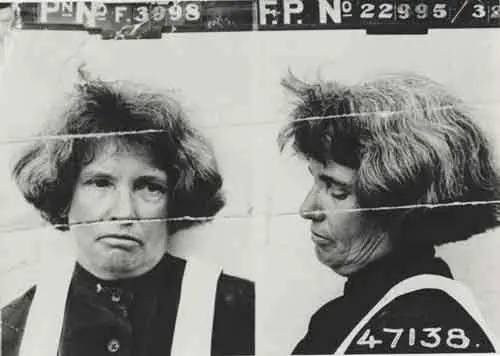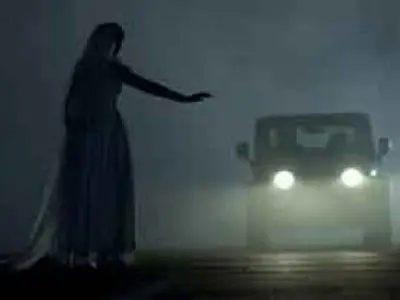Daisy de Melker: The Dark Tale of South Africa's First Documented Serial Killer

Born on June 1, 1886, at Seven Fountains near Grahamstown, Daisy Louisa Hancorn-Smith would become infamous as Daisy de Melker, South Africa's first documented serial killer. She was accused of murdering two husbands with strychnine and her son, Rhodes, with arsenic.
Her 1932 trial at the Johannesburg High Court drew massive public attention. Spectators queued for hours each day to witness the proceedings. Daisy, always dressed in a modest black dress, greeted the crowds with the wave of a celebrity, seemingly enjoying the attention. Her light-hearted demeanor throughout the trial suggested she believed she would be acquitted. And she almost got away with murder, if not for a surprise witness and a fictitious cat...
In her early years, Daisy moved to Bulawayo in Rhodesia to live with her father and two brothers. During the Anglo-Boer War, she returned to South Africa as a boarder at the Good Hope Seminary School in Cape Town where she was an outstanding student. After a brief return to Rhodesia in 1903, she enrolled at the Berea Nursing Home in Durban. During a home visit, Daisy met Bert Fuller, a handsome young civil servant. They were engaged to be married when Bert fell ill and died of Blackwater Fever on their wedding day. Bert left a will bequeathing Daisy £100.
Eighteen months after Bert's death, Daisy married William Alfred Cowle, a thirty-six-year-old plumber from Johannesburg. The couple had five children, but only Rhodes survived. William, whom Daisy affectionately called ‘Alf’ suffered from stomach ailments and died on January 11, 1923. Daisy Cowle inherited £1795.
Three years after the death of her first husband, Daisy married Robert Sproat, another plumber. A year later, Robert collapsed and suffered severe stomach cramps and convulsions, but made a full recovery. His reprieve only lasted a month though, when on November 6, 1927, he suffered another attack and died within minutes. Daisy inherited £4000 and an additional £560 was paid out by Robert’s pension fund.
In 1931 Daisy married for the third time. Her husband was Sidney Clarence De Melker, who, like her two previous husbands, was a plumber. By this time Rhodes Cecil Cowle, Daisy’s only child, was nineteen years old and had a reputation for apathy and laziness. It is not clear why Daisy decided to kill Rhodes. In the case of her first two husbands, the motive seemed clearly to be financial gain. In the case of Rhodes, it has been suggested that she thought him a disappointment, that she grew weary of supporting him financially, that he was a burden to her, and even most shockingly, that he suspected her involvement in the death of his father and step-father and she was being blackmailed by him. Whatever the reasons, Daisy De Melker poisoned her son.
Rhodes was buried at New Brixton cemetery beside the graves of his father and step-father, and a week later, Daisy was arrested. William Sproat, whose suspicions had never subsided, alerted the police to the uncanny similarities in the deaths of all three men. The bodies were exhumed and faint traces of strychnine were found lodged in the vertebrae of both husbands, coloured a soft pink from the dye chemists used to mark the poison at the time. Rhodes’ body was remarkably well-preserved, a characteristic of the presence of arsenic.
When the police searched her house though, they found no trace of any poisons. The prosecution had only circumstantial evidence, not enough to guarantee a conviction. They desperately scoured the poison registries at pharmacies in the area without any luck, until a local newspaper printed her photograph and a pharmacist from Turffontein recognised an old customer.
Late in February 1932 Daisy De Melker traveled from Germiston to Turffontein to acquire a measure of arsenic from a pharmacist in that area claiming she needed it to kill a cat. Spilkin, the said pharmacist, recognised Daisy as Mrs. Cowle, although she signed the register as Mrs. Sproat. By that stage, she had been Mrs. De Melker for thirteen months already.
The prosecution sprung Spilkin as a surprise witness and when she saw who was about to testify, Daisy’s smugness dissolved immediately. Her lawyer scrambled to undo the damage, claiming she had been visiting a friend in the area and happened to pop into the pharmacy, that she had tossed the cat in the dustbin without mentioning it to her family, and that she had signed her old name by force of habit. It was a futile attempt.
On the 25th of November 1932, Daisy De Melker was acquitted of the deaths of her two husbands but found guilty of murdering her son. She was sentenced to death by hanging.
On the morning of 30 December 1932, South Africa’s first recorded serial killer, Daisy de Melker, was hanged in the Pretoria Central Prison. Her husband Sidney maintained her innocence until the very end and laid white violets on her coffin.
Fun Facts about SA’s First Femme Fatale:
- Daisy De Melker is historically the second woman hanged in South Africa. The first was Dorethea Van Der Merwe who was hanged in 1921 for assisting in the bludgeoning to death of her former lover. The last woman to be hanged in South Africa was Sandra Smith, who together with her lover knifed to death a young girl they had befriended.
- Daisy De Melker became somewhat of a popular mythical icon in South Africa: If a door blew shut in the wind it was said to be the ghost of Daisy De Melker. If your hair was unkempt and wild “you looked like Daisy De Melker”
- Rumour has it that Daisy haunts Ward 7 of the Transvaal Children’s Hospital in Braamfontein.




